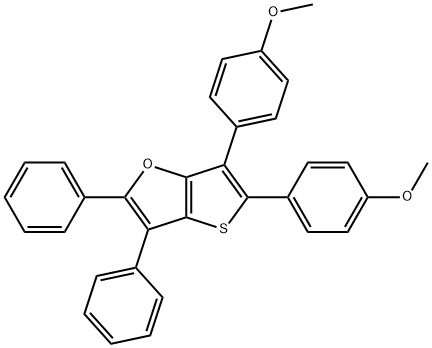Imazapyr acid
- CAS NO.:81334-34-1
- Empirical Formula: C13H15N3O3
- Molecular Weight: 261.28
- MDL number: MFCD00144470
- EINECS: 617-219-8
- SAFETY DATA SHEET (SDS)
- Update Date: 2024-12-18 14:08:57

What is Imazapyr acid ?
Chemical properties
solid
The Uses of Imazapyr acid
Imazapyr is an analytical standard used for proteomics research.
What are the applications of Application
Imazapyr is an analytical standard used for proteomics research
Definition
ChEBI: 2-(4-isopropyl-4-methyl-5-oxo-4,5-dihydro-1H-imidazol-2-yl)nicotinic acid is a pyridinemonocarboxylic acid that is nicotinic acid which is substituted at position 2 by a 4,5-dihydro-imidazol-2-yl group, which in turn is substituted at positions 4, 4, and 5 by isopropyl, ethyl, and oxo groups, respectively. It is a member of pyridines, a member of imidazolines, an imidazolone and a pyridinemonocarboxylic acid.
Pharmacology
Imazapyr kills plants by inhibiting acetolactate synthase (ALS) (I50 = 5 μM), which is the first common enzyme in the biosynthesis of the branched chain amino acids, valine, leucine, and isoleucine. Imazapyr is rapidly absorbed through the leaves of plants. Once it enters the plant, imazapyr rapidly translocates to the growing points and growth ceases within 1 day after herbicide application followed by chlorosis and then necrosis of the growing points. Total plant death will occur within 2 to 3 weeks after treatment.
Environmental Fate
Imazapyr is weakly to moderately adsorbed on sandy loam and silt loam soils. The Freundlich adsorption coefficient ranges from 0 to 7.8 (15). Because imazapyr is a weak acid and exists in different ionic states, soil pH has an effect on soil binding properties. The anionic form predominates at soil pH as low as 5.5, and this form bindsweakly to soil. The neutral or molecular form is important at soil pH from 4 to 6.5. This form binds to soil organic matter and clay. The cationic form is important at pH less than 4. Because the soil is a heterogeneous mixture of acid and base chemical groups, there may be sites within a particular soil that are 2 to 3 pH units higher or lower than the average pH. The cationic form will bind tightly to the lower pH components. Because of these interactions, small decreases in pH below 6 will result in large increases in binding. The half-life of imazapyr in the soil is 25–142 d (14). Imazapyr remains in the top 30 cm of the soil with low leaching potential. The degradation route of imazapyr in the soil has not been determined.
Metabolism
Plant Metabolism. The selectivity of imazapyr is due to
differential rates and routes of metabolism in tolerant
crops versus susceptible weeds (3). The half-life
of imazapyr in tolerant crops has not been accurately
determined. The metabolic route of imazapyr is not clear.
The parent compound can be metabolized to a tricyclic
compound (33, Fig. 15) in some species, but the primary
metabolite is an imidazopyrrolo-pyridine derivative (34,
Fig. 15). This compound does not inhibit acetolactate
synthase, the target site for the imidazolinones, and it
is immobile in the plant (4).
Animal Metabolism. Metabolism studies in the rat
showed that imazapyr is rapidly excreted in the urine (5).
There was no accumulation of imazapyr or any of its
derivatives in the liver, kidney, muscle, fat, or blood.
Toxicity evaluation
Imazapyr has shown no mutagenic or genotoxic activity in the Ames assay, mammalian cell gene mutation assay, in vitro chromosome aberration assay, in vitro unscheduled DNA synthesis (URS) assay, or the in vivo dominant lethal assay in male rats.This herbicide also has a low potential for bioaccumulation in fish.
Properties of Imazapyr acid
| Melting point: | 169-173°C |
| Boiling point: | 404.53°C (rough estimate) |
| Density | 1.1923 (rough estimate) |
| vapor pressure | 0-0Pa at 20-25℃ |
| refractive index | 1.5600 (estimate) |
| storage temp. | 0-6°C |
| form | neat |
| pka | 1.9, 3.6(at 25℃) |
| BRN | 5442754 |
| Stability: | Stable. Incompatible with strong oxidizing agents. |
| CAS DataBase Reference | 81334-34-1(CAS DataBase Reference) |
| EPA Substance Registry System | Imazapyr (81334-34-1) |
Safety information for Imazapyr acid
| Signal word | Warning |
| Pictogram(s) |
 Exclamation Mark Irritant GHS07 |
| GHS Hazard Statements |
H319:Serious eye damage/eye irritation |
| Precautionary Statement Codes |
P264:Wash hands thoroughly after handling. P264:Wash skin thouroughly after handling. P280:Wear protective gloves/protective clothing/eye protection/face protection. P305+P351+P338:IF IN EYES: Rinse cautiously with water for several minutes. Remove contact lenses, if present and easy to do. Continuerinsing. P337+P313:IF eye irritation persists: Get medical advice/attention. |
Computed Descriptors for Imazapyr acid
New Products
(S)-3-Aminobutanenitrile hydrochloride 4-Methylphenylacetic acid N-Boc-D-alaninol N-BOC-D/L-ALANINOL Tert-butyl bis(2-chloroethyl)carbamate 3-Morpholino-1-(4-nitrophenyl)-5,6-dihydropyridin- 2(1H)-one Furan-2,5-Dicarboxylic Acid Tropic acid 1-Bromo-3,5-Di-Tert-Butylbenzene S-2-CHLORO PROPIONIC ACID ETHYL ISOCYANOACETATE 2-Bromo-1,3-Bis(Dimethylamino)Trimethinium Hexafluorophosphate 4-IODO BENZOIC ACID 3-NITRO-2-METHYL ANILINE 1-(2,4-DICHLOROPHENYL) ETHANAMINE (2-Hydroxyphenyl)acetonitrile 4-Bromopyrazole 2-(Cyanocyclohexyl)acetic acid 4-methoxy-3,5-dinitropyridine 1-(4-(aminomethyl)benzyl)urea hydrochloride 2-aminopropyl benzoate hydrochloride diethyl 2-(2-((tertbutoxycarbonyl)amino) ethyl)malonate tert-butyl 4- (ureidomethyl)benzylcarbamate Ethyl-2-chloro((4-methoxyphenyl)hydrazono)acetateRelated products of tetrahydrofuran








You may like
-
 Imazapyr CAS 81334-34-1View Details
Imazapyr CAS 81334-34-1View Details
81334-34-1 -
 2033-24-1 98%View Details
2033-24-1 98%View Details
2033-24-1 -
 1975-50-4 98%View Details
1975-50-4 98%View Details
1975-50-4 -
 2-HYDROXY BENZYL ALCOHOL 98%View Details
2-HYDROXY BENZYL ALCOHOL 98%View Details
90-01-7 -
 2-Chloro-1,3-Bis(Dimethylamino)Trimethinium Hexafluorophosphate 221615-75-4 98%View Details
2-Chloro-1,3-Bis(Dimethylamino)Trimethinium Hexafluorophosphate 221615-75-4 98%View Details
221615-75-4 -
 61397-56-6 CIS BROMO BENZOATE 98%View Details
61397-56-6 CIS BROMO BENZOATE 98%View Details
61397-56-6 -
 14714-50-2 (2-Hydroxyphenyl)acetonitrile 98+View Details
14714-50-2 (2-Hydroxyphenyl)acetonitrile 98+View Details
14714-50-2 -
 118753-70-1 98+View Details
118753-70-1 98+View Details
118753-70-1